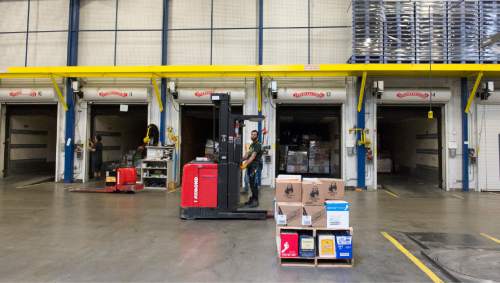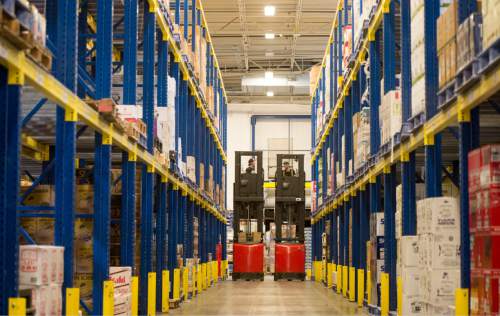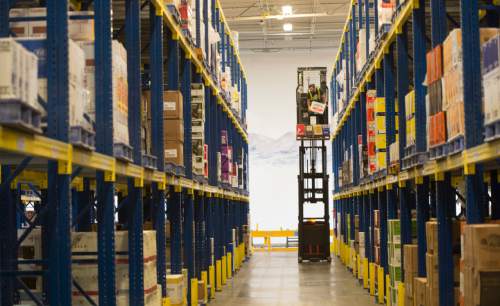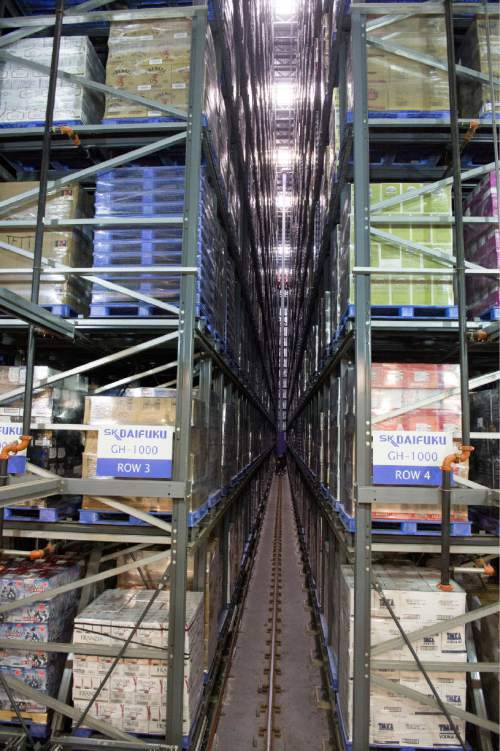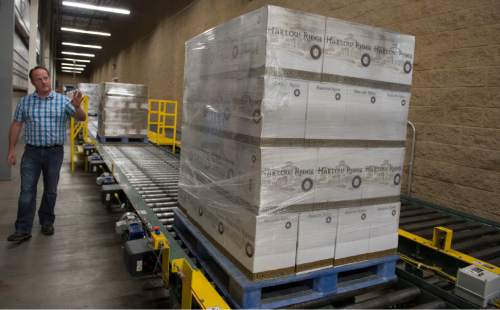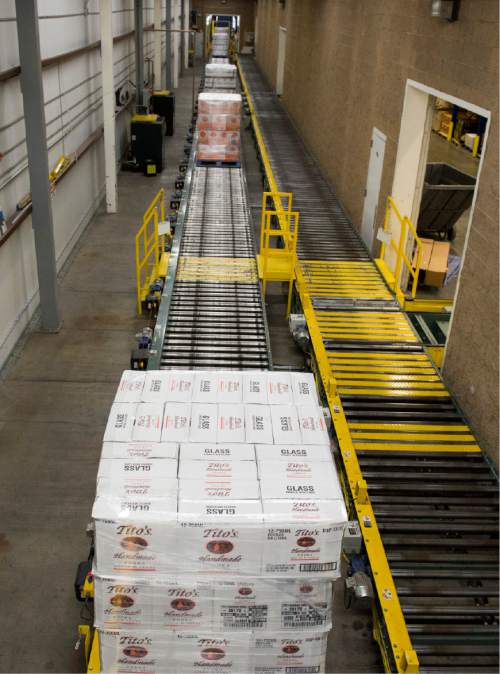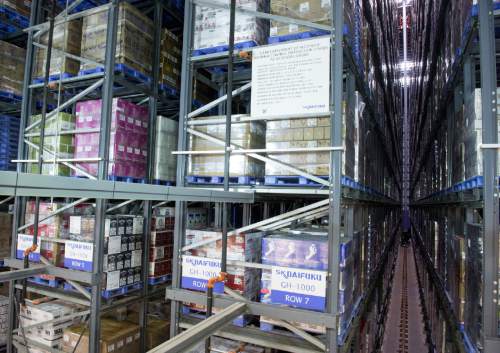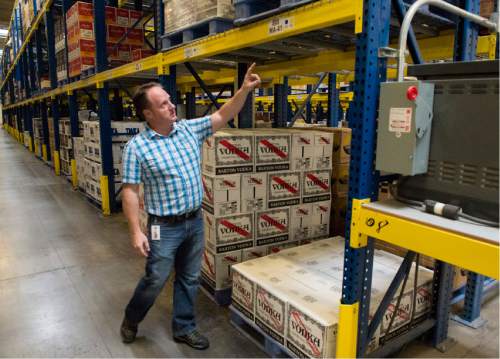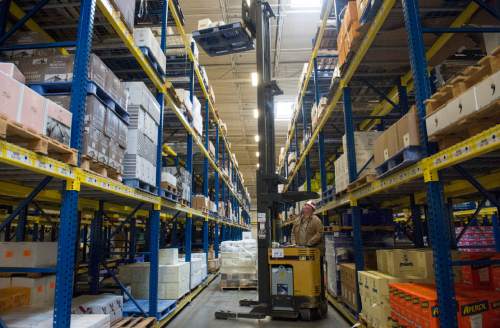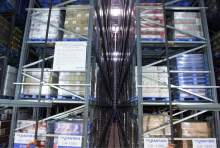This is an archived article that was published on sltrib.com in 2015, and information in the article may be outdated. It is provided only for personal research purposes and may not be reprinted.
Boxes no longer block the aisles at some Utah state liquor stores, and there often are empty racks where bottles of chardonnay, merlot and sherry once perched.
While some days it may look as if there's been a run on high-end wines and spirits, the reduced inventory is the result of a controversial new ordering system implemented by the Utah Department of Alcoholic Beverage Control (DABC).
DABC leaders tout the system as more efficient and cost effective, while employees argue it is flawed, and many resent what they contend was the heavy-handed way it has been implemented. That this system has created such diverging viewpoints — and was cited as the reason store managers recently retired or quit after decades of service — prompted a closer look.
—
Mandated change • The DABC was forced to improve the old ordering system for beer, wine and spirits after a 2012 legislative audit found — among other things — that liquor stores were carrying too much inventory, causing inefficiencies and additional costs.
"Some stores are packed so high with extra inventory that it is difficult for employees to walk behind the store shelves," auditors wrote in the 80-plus-page report. And, at the time, auditors conducted a review of nine randomly selected stores that showed "excess inventory exceeded $1.7 million."
Auditors told the department to "establish ordering polices and procedures for stores," and leaders took it to heart.
Today, the new "inventory replenishment system" uses sales data to determine what is delivered to stores. That means once one case of Robert Mondavi is sold at the Sandy liquor store, for example, another one is automatically shipped out the next day.
"We also have minimum inventory levels set for each item that act as a safety net to prevent stockouts," the DABC said in a written response to questions submitted by The Salt Lake Tribune.
The program was created in-house and had no additional costs, DABC officials said.
"The department used an already existing program to compile and analyze data from the point-of-sale system and no additional equipment was purchased," the DABC statement noted.
"Since the ordering system has been implemented, there has been a 16 percent reduction in inventory costs at the retail stores," the DABC added. "The reduction equates to $3.2 million fewer dollars tied up in store inventory, which leads to a more efficient use of state funds."
When the automated ordering was put into place — and combined with the DABC's 10-year-old automatic warehouse system — it also cut down the wait time for delivery. Stores used to wait five to seven days for their order to be delivered; now, if the order is placed early in the day, it can happen in about 24 hours, warehouse manager Cade Meier said during a recent tour of the warehouse. "We never thought we'd get to that."
The automated system and other new inventory policies implemented after the 2012 audit represent a "sea change" for the department, executive director Sal Petilos said after last week's liquor-commission meeting.
Like any new system, "the implementation went through several iterations, and we listened to stores and the concerns they raised," Petilos said. Initially "there may have been too much of X and not enough of Y," but those problems, for the most part, are now solved.
—
Bullying and spying • Current and former employees argue the new computer system has taken ordering to the opposite extreme: Instead of too much inventory, there's not enough, and stores often run out of popular items and managers no longer are able to tailor their inventory to specific clientele.
"If the central ordering was able to do everything automatically, taking everything into consideration, it would be great, but it doesn't," said Craig Anderson, who recently retired as the manager of the liquor store at 204 W. 400 South, Salt Lake City. "The computer doesn't realize that a big convention is coming to town next week and you need extra safety stock. The computer doesn't realize it is New Year's Eve and you need 30 cases of a particular champagne. The computer is not able to exercise judgment when judgment is needed."
Managers bold enough to complain about the automated system, Anderson said, have been "systematically targeted and bullied until they quit, retire or get fired."
The frustrations came to a head in March, when Ron Harris, the longtime manager at Salt Lake City's Metro Wine Store, was put on paid administrative leave just days after announcing his retirement. In protest, Gary Clark, the store's assistant manager — who also had planned to retire — quit on the spot. Harris reportedly had been a vocal opponent of the new ordering system.
With Harris and Clark gone, customers at the Metro store, one of Utah's busiest and highest-grossing liquor stores, lost more than 55 combined years of liquor knowledge and customer-service experience.
The emails from customers as well as past and present employees started filling the inbox of Sen. Karen Mayne, a longtime advocate for fair-employment issues. On Tuesday, the West Valley City Democrat scolded state liquor commissioners and DABC leaders for the alleged mistreatment of liquor-store workers and told them to fix the problems.
"If you've got trouble there [at the bottom], you've got trouble all the way up," she said. "Something is amiss here."
—
Taxpayer money • Low morale and employee turnover have long been an issue for the DABC, and critics say it has only been exacerbated by the new ordering system. Utah's 43 state-owned liquor stores currently employ 498 workers; the majority — 295 — are part time. Petilos said the agency recently upped the minimum hourly wage for workers from $8.60 to $9 an hour.
In 2013, the overall turnover rate for liquor-store clerks was 55 percent, up from 2012, when it was 47 percent. The 2013 turnover rate for part-time clerks was 63 percent, compared with only 21 percent for full-time clerks. Also, since 2011, about a third of the 43 liquor-store managers have left or retired.
DABC officials have long pointed to the lack of funding from the Legislature as the reason for the department's low pay and high turnover.
But a University of Utah business professor said pay isn't typically the only factor with high turnover.
"People leave because they are unhappy, not motivated and the workplace culture is not supportive," said University of Utah professor Abe Bakhsheshy, an expert in organizational behavior and the business school's Daniels Fund Ethics Initiative Professor.
He said researchers have looked at all the reasons people leave a job, from pay and age to training and job satisfaction.
"The No. 1 reason is lack of recognition for a job well done, not knowing what is going on and not being part of the process," he said. "Despite what anybody says, pay level and pay satisfaction are weak predictors.
"Being valued, being respected and recognized," he added, go a long way in keeping employees.
Bakhsheshy said constantly having to train new employees is not only stressful for managers but ultimately affects the bottom line.
"Employee-replacement costs are absolutely incredible. From general recruitment costs to new orientation and training, the turnover cost is too much," he said, adding it is especially problematic when it's happening at a government agency. "It is the taxpayers' money being wasted and thrown away."



